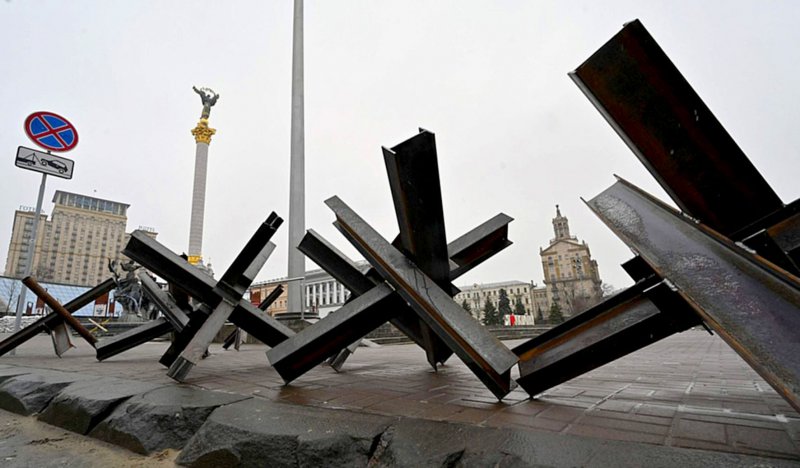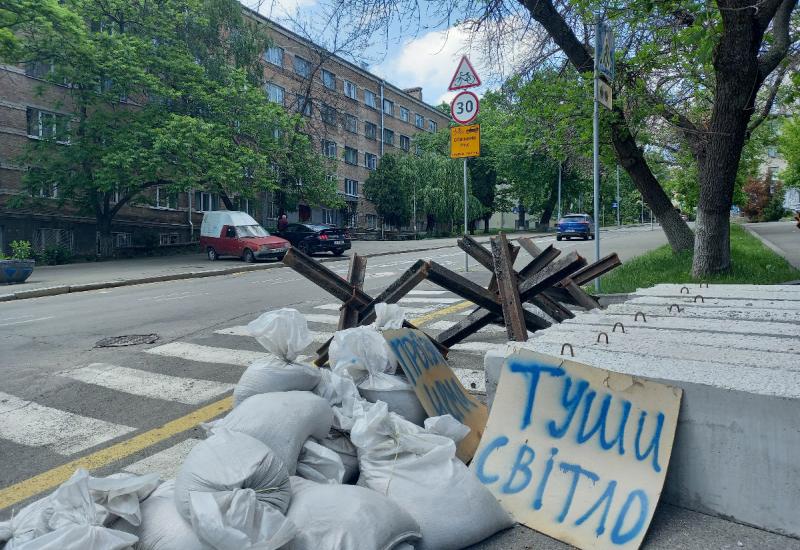During World War II, many unique examples of equipment and weapons were created, which became its real symbols. The list is significant, though quite primitive, but at the same time extremely effective hedgehogs, which played an invaluable role in the defense of Kyiv (this is where they were used for the first time), Odesa, Sevastopol and other cities, aren’t lost in it. The current war that russia is waging against Ukraine has forced our military and territorial defense fighters to remember their ability to quickly immobilize enemy armored vehicles and make them a convenient target.
The issue of blunting the drive of enemy troops was tackled in different ways during many centuries. For example, in ancient Rome, they successfully used barriers against infantry and cavalry made of wooden pegs. Many centuries later, such obstacles were wrapped with barbed wire, which dramatically increased their effectiveness. However, at the beginning of the twentieth century, when tanks appeared on the battlefields that easily overcame impassable barriers, the role of traditional wooden ones declined. Therefore, in many countries, intensive searches for simple and effective means of combating "land dreadnoughts'' have begun. The first attempt to use appropriate barriers against tanks was made in Czechoslovakia (hence the English name of the hedgehog - Czech hedgehog) - the Czechoslovak wall on the border of Czechoslovakia was erected with their help in the 1930s. Made of reinforced concrete, the Czech construct reproduced the principle of ancient obstacles, as it was assumed that the barrier should be massive and fixed. However, the new tanks easily overcame these barriers, simply moving them out of their way. A fundamentally new design and principle of operation of this non-explosive defense device was proposed by the head of the Kyiv Tank Technical School, Major General of the Technical Troops Mykhailo Lvovich Gorikker (1895-1955) before World War II. The novelty of the development was that the hedgehog was not fixed in place or dug into the ground like a mound. When a tank hit a hedgehog, the "prickly" construct began to move, gradually raising the tank above the ground. Tank caterpillars lost their adherence, began to skid and the vehicle was often unable to get off the hedgehog. After that, there was a little difficulty in destroying the immobile armor. In the case of tanks bypassing the blocked area, the hedgehogs still performed their task, as the direction of the tank threat, which they defended, the enemy could not break through. Tests on July 3, 1941, confirmed the high efficiency of the "six-pointed star" (that's what Gorikker called his device, so in many early documents hedgehogs were called "Gorikker stars"), and a new anti-tank barrier was adopted. The test report of a pilot batch of hedgehogs made at the Bolshevik plant in Kyiv stated: "The T-26 light tank failed during the first approach to the obstacle - the oil pump hatch was broken and the oil pipes were damaged, as a result of which the oil leaked from the engine in 3-5 minutes, which forced the vehicle to stop. Due to the large reserve of dynamic effort, the BT-5 tank overcame the initial placement of obstacles, which resulted in dented up hull floor, and affected handling the tank, and operation of onboard clutches; the tank needed two hours to be repaired.
Here is how the son of the inventor, theater and film director Volodymyr Mykhailovych Horikker (b. 1925), recalls the events of those years: "I remember well the first days after the fascist attack on the USSR. My father was appointed to command the defense of Kyiv, to which the enemy approached. There was a lot of work, but returning home late in the evening, my dad, instead of getting some rest, "requisitioned" toy models of tanks that he had given me as a gift, and spent almost the whole night putting his mind to them, rearranging them on the table with some constructions from matches connected by glue or plasticine. To me, boy, the purpose of these things was unclear. I even thought that my father was just trying to distract himself in this way, fighting insomnia ... But one day he returned earlier than usual, literally shining, and almost from the doorstep of the apartment enthusiastically shouted: "We screwed two tanks up!!!" I say! The family knew how attentive he was to the preservation of equipment, how he gave a good scolding even for minor violations that can damage tanks, and here - did not hide the joy of the breakdown of two combat vehicles ... Only much later I did understand the significance of the event that took place that day at the Syrets test site of Kyiv Tank Technical School."
This was one of the rare cases when the invention turned out to be almost perfect and did not require further refinement. Literally the next day, after successful tests at the test site a decision was made on the mass production of hedgehogs and their use to protect the capital of Ukraine on armored approach routes. The first batch of 700 hedgehogs was urgently made in the shops of the Bolshevik plant.
The hedgehog was usually made of three pieces of rolled steel, preferably an I-beam with a profile number of 25 to 40 (the number indicates the height of the cross section of the profile in centimeters) so that their ends form an octahedron. Gorikker considered riveted plates the best way to connect the beams with each other. During World War II, hedgehogs were often made of any available profile - channel, angle, rail - often connected by welding, even without plates that reinforce the construct. As Colonel-General Heinz Wilhelm Guderian later wrote in his memoirs, at first the German men of armor laughed merrily, noticing iron constructs, miniature by tank standards, in front of their tanks but later they did understand there was no laughing matter. At the initial stage of the war, hedgehogs proved to be extremely effective: insufficiently strong bottoms of light German tanks with an engine front position often not only deformed, but even got ripped open with the "needles'' of hedgehogs, which put transmission units out of action. (It is interesting to note that the Germans, impressed by the effectiveness of Soviet hedgehogs, carried tens of thousands of constructs out of our country, and used them in the defense of Berlin in 1945.)
The size of the hedgehogs was of great importance: not always the bigger "stars" were the better. According to the developer's recommendations, the hedgehogs had to have a height of 0.8 to 1 m - that is, to be higher than the ground clearance of enemy tanks, but lower than the upper edge of the lower frontal armor plate. Only in this case, the hedgehog lifted the tank and made it motionless. Larger hedgehogs were easily pushed by the tank out of its way, without causing any damage to the vehicle and only hindered the rapid advance of infantry. It was most rational to put the hedgehogs in four rows in a checkerboard pattern, with the distance about 2/3 of the width of the tank between the hedgehogs on the front.

The disposition of the hedgehogs was also (and still is) important. It is desirable to put the hedgehog on solid ground or asphalt (concrete is unsuitable for this, because the hedgehog slides on it easily). Industrially manufactured hedgehogs often had holes for barbed wire, which connected not only the individual "needles", but also the hedgehogs themselves, and one of the beams was made removable for easy transportation of the structure. To complicate the work of enemy sappers, hedgehogs were connected by chains or ropes, and the area around them was mined. It was not recommended to connect the hedgehogs rigidly, because each hedgehog "worked" separately, and the rigid structure of hedgehogs turned into a kind of fence, which lost the benefits of separate constructs.
Lighter antipersonnel hedgehogs, like ancient barriers, were often made of three wooden pegs up to 1.5 m long pointed at both ends, connected in the middle and at the ends with barbed wire, which not only provided structural rigidity but also created additional benefits. Such antipersonnel hedgehogs were usually used to block roads and streets, often arranged in several rows. There is one more type of hedgehogs - anti-landing; when they laid down barrages installing hedgehogs in the water at a depth of 1.8-2.5 m in places of possible sea or lake landings.
The inventor was never presented with a state award for his development, but the authorities still noted his work: Gorikker was presented with a FED camera…
… Of course, at a first glance, primitive hedgehogs are less effective than powerful minefields and other anti-tank weapons: guns, rifles, grenades. However, they have one undeniable advantage - extreme simplicity and mobility, thanks to which they can be made in large quantities from improvised materials without the use of high technology and easily transferred from one site to another, which was successfully demonstrated during World War II.

